Steel is used in air conditioning, heating and ventilation systems, as well as to make various fasteners, brackets and much more (not to mention a variety of production equipment and tools).
Masterpieces of industrial architecture
When we start to think about manufacturing facilities, design is the last thing that comes to mind. However, the utilitarian design of industrial buildings has attracted many talented architects since the beginning of the widespread use of steel in construction.
The Van Nelle Factory (Van Nellefabriek in Dutch) is an example of outstanding industrial architecture and one of the most important industrial monuments of the Netherlands. Prior to 1996, it produced tea, coffee, tobacco, chewing gum, groceries and other foodstuffs; today, it is home to offices and coworking spaces. The Van Nelle Factory building was constructed about 100 years ago in Rotterdam under the influence of Soviet constructivism ideas. Since 2014, it has been listed as a UNESCO World Heritage Site.
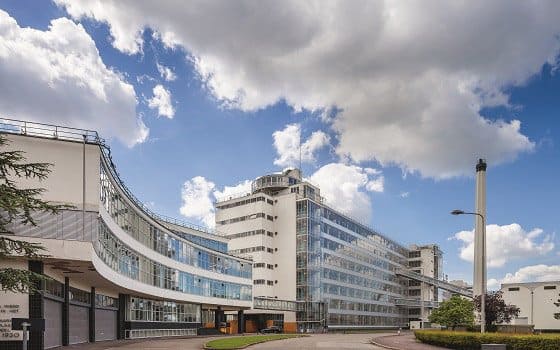
Architectural historians believe that the Van Nelle Factory was conceptually far ahead of its time. The building’s facades are mainly made of steel supports and glass window surfaces.
Their design gave the opportunity to literally “flood” the plant’s shops with natural sunlight, which was an almost unprecedented solution in industrial architecture at the beginning of the last century.
Contemporaries called the Van Nelle Factory “a poem in steel and glass”.
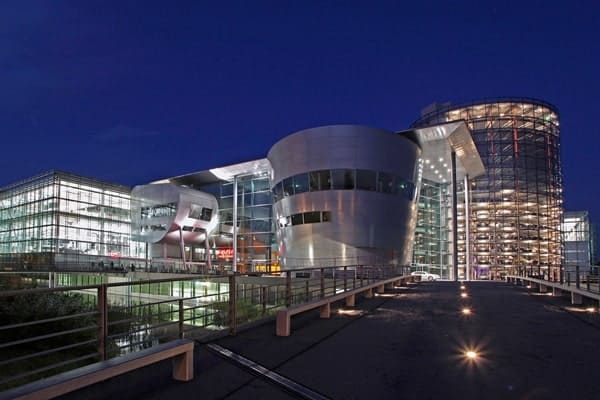
The prevalence of window surfaces and light steel structures was also the main solution for the facade of the German automaker Volkswagen’s Transparent Factory, built in 2002.
The building is in fact transparent, in terms of both its optical perception and the openness of the automobile assembly production process, which can be observed while walking alongside the one-and-a-half-kilometre Transparent Factory.
The design concept for the GreenHouse factory and offices (built in 1995 in the US city of Holland, Michigan) is to fit the industrial structure into the surrounding landscape as naturally as possible, both visually and functionally. Here, the architects chose glass surfaces and steel frames to set the building’s rhythm.
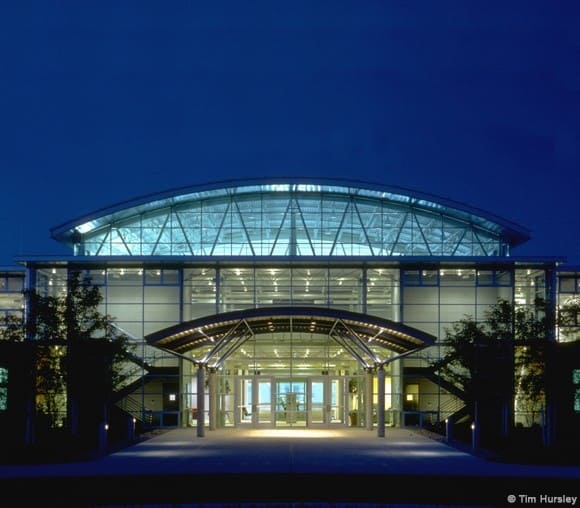
A long open corridor (known as the “street”) runs length of the GreenHouse’s office and production facilities, uniting the workshops of this furniture factory into a single industrial ecosystem.
The nature-friendly philosophy extends not only to the building’s design, but also to the production processes used at the GreenHouse facility.
While the plant receives tens of thousands of tonnes of various materials and packaging a year, it scraps less than 10 kilogrammes of waste a month.
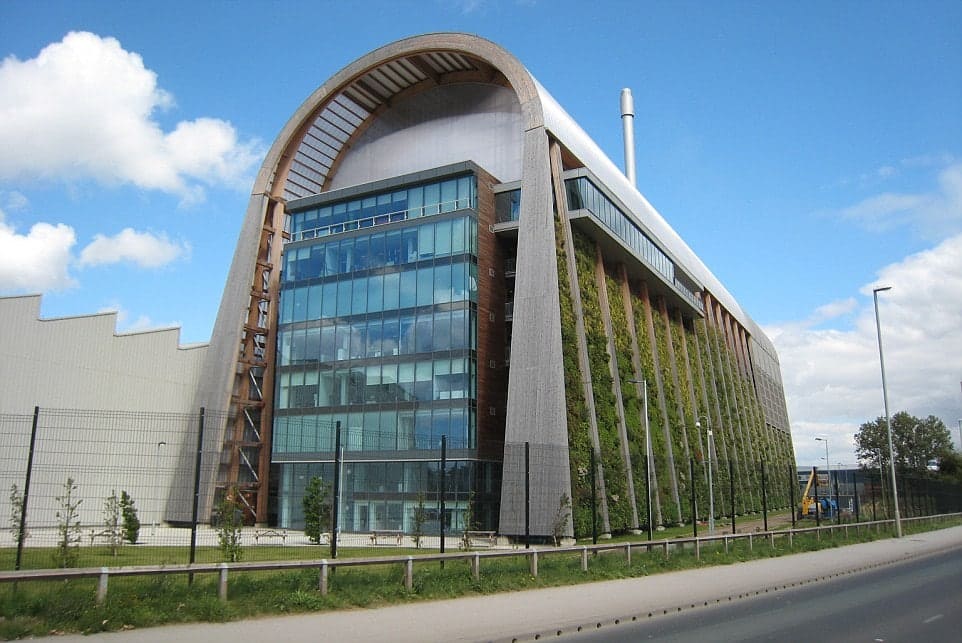
The architects of the Recycling and Energy Recovery Facility in Leeds, UK took a different approach to using steel in construction.
Built in 2016, it is designed to process 214,000 tonnes of household waste a year and is an important part of the Zero Waste Cities municipal strategy.
The ideology of this green enterprise is clearly illustrated by its living walls entwined with plants, wooden beams and a sparkling sloping roof made of stainless steel (remember, steel is a material that can be recycled countless times with almost no loss of the properties and quantity of metal).
Steel-framed buildings
However, such buildings are largely works of art. Most modern industrial buildings are steel-framed, one-storey hangars ranging in size from several hundred to one hundred thousand square metres. Up to 95% of low-rise industrial buildings in the US are built using steel-frame technology.
The popularity of this type of construction is quite understandable. First, steel structures are extremely strong and lightweight. This means that fewer frame components with a relatively low overall weight are required for the construction of the building (the structure’s lower weight also reduces the amount of concrete needed for the foundation). Second, they take about one-third less time to build. The construction process itself mostly comes down to the assembly of the future building’s steel elements. They are delivered to the construction site by trucks ready for subsequent assembly, and in some cases partly assembled. Third, the architectural peculiarities of such steel structures are noteworthy. Steel-frame buildings do not need internal columns: no other material can provide an open space up to 100 metres wide without supports. Fourth, the durability of steel-frame structures must be mentioned. They are not prone to the formation of mould and fungus, they are not vulnerable to termites, lightning and earthquakes, they are fire resistant, and they do not require special care. These all equate to operating cost savings. And finally, there is the environmental aspect: a steel frame building is almost completely recyclable.
An example of such a structure is the WuXi Biologics “factory of the future”, which a major Chinese pharmaceutical manufacturer is building from scratch in Ireland, investing more than EUR300 million in the project. The laboratory, administrative, production and utility buildings, as well as the warehouse premises, have a steel frame made with 5,500 tonnes of steel. It is not a one-storey factory: all of the buildings have from two to four floors. Construction speed was one of the main reasons why the customer chose to use a steel structure. Construction began in the spring of 2020 and was near completion in the spring of 2021.
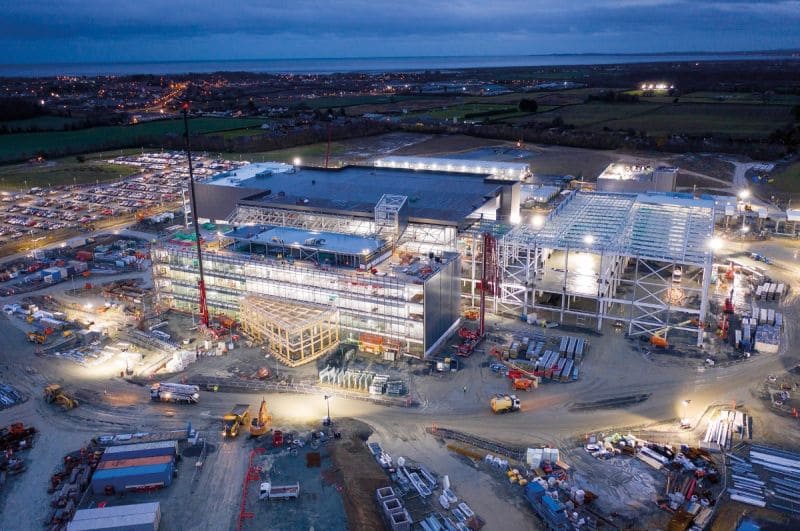
Another example of a modern steel-frame plant is the Kent Renewable Energy facility in Kent, UK, which was commissioned in 2018. This electric-power production plant with an installed capacity of 27.8 MW runs on wood chips and reduces annual carbon dioxide emissions by about 100,000 tonnes, generating energy for 50,000 homes.
However, the engineers involved in the construction of the Kent Renewable Energy facility noted that, regardless of the fuel they use, power plants in the vast majority of cases are built using steel structures. They added that steel offers the most efficient design for such power facilities because of the relatively fast speed and low cost of building tall structures. Interestingly, in the case of Kent Renewable Energy, steel-framed facades were installed at the same time as the boilers and turbines, which were delivered through holes in the roof. In addition, some of the facility’s walls were erected around the existing plant, which continued to operate, offering a good illustration of the flexibility and versatility of the assembly process for steel-frame industrial facilities.
Steel sandwich panels
Sandwich panels are also widely used as enclosures or cladding in the construction of steel-frame factories. The “sandwich” construction consists of two rigid sheets (usually made of colour-coated galvanised steel) with insulation between them. Galvanised steel protects the sandwich panels from corrosion: the thicker the zinc layer, the higher the anti-corrosive properties. In addition, stainless steel panels can be found on the market.
Sandwich panels were first used for construction in 1930 in the US. A century later, the technology is still quite popular. The main advantage of the panels is the significant reduction in the time needed to erect the structure. Sandwich panels are prefabricated structural elements that can be easily assembled into a steel frame.
The strength, versatility and environmental friendliness of steel have made it the main material for construction of industrial facilities for more than 100 years already. The steel factories of the past are recycled as part of the raw material for modern steel structures. It is fair to assume that today’s steel factories will eventually be turned into the factories of the future. The ways that steel is used will surely change; after all, it would have been difficult to imagine at the beginning of the last century that it would take months, rather than years, to build an industrial giant. However, the need for reliable and cheap steel will remain unchanged.
